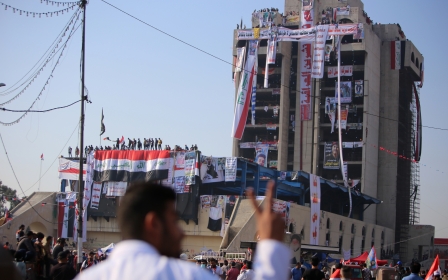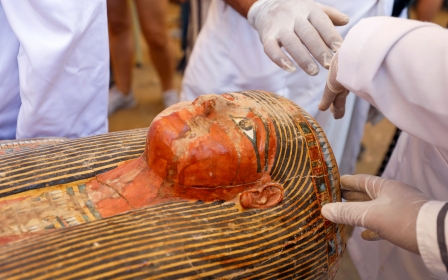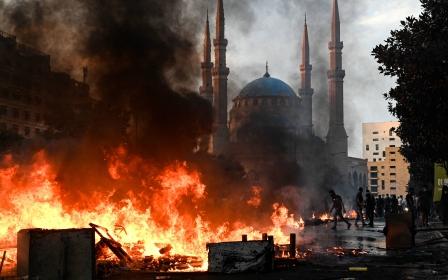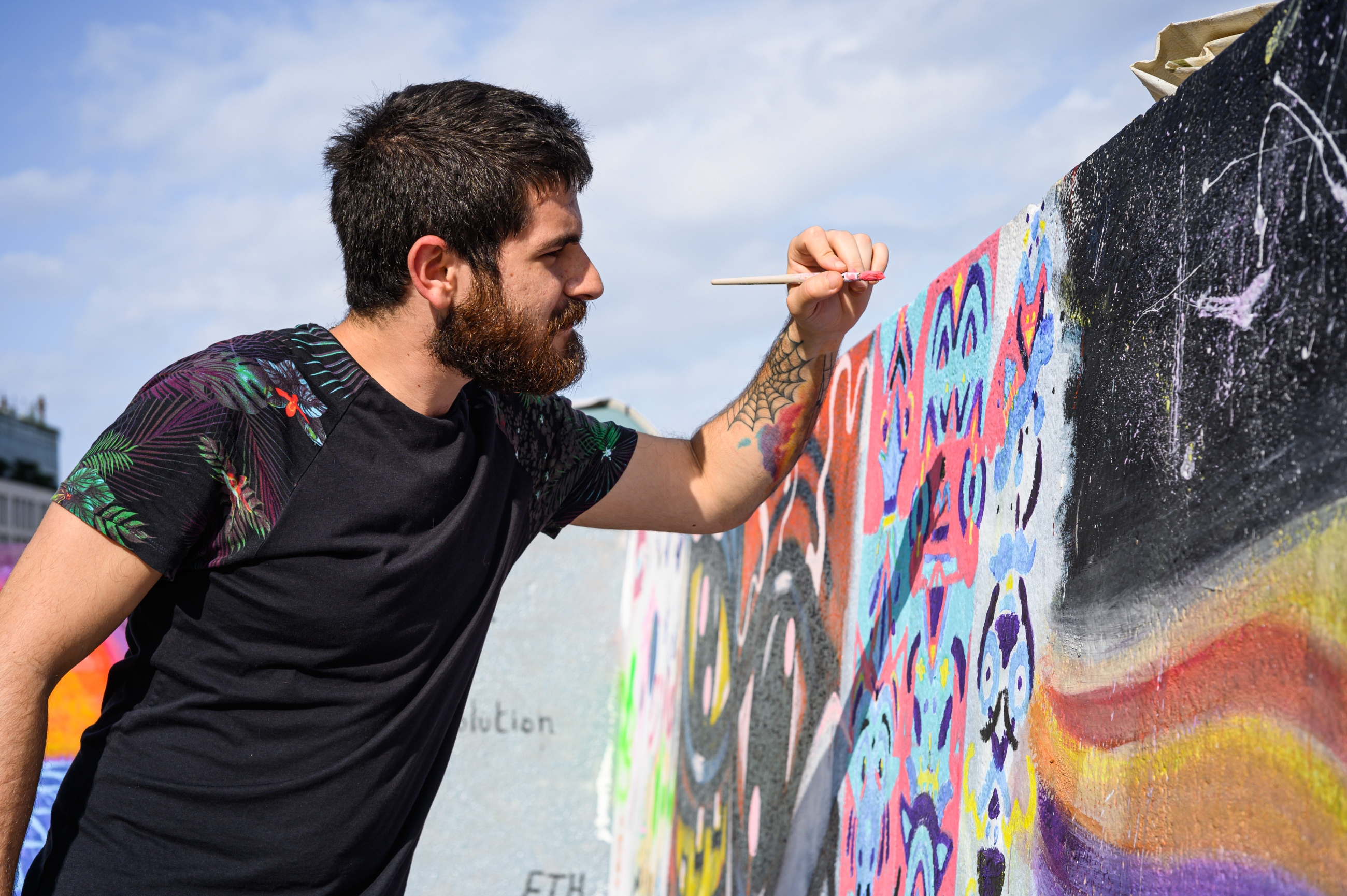
In pictures: Protest art breathes life into Downtown Beirut
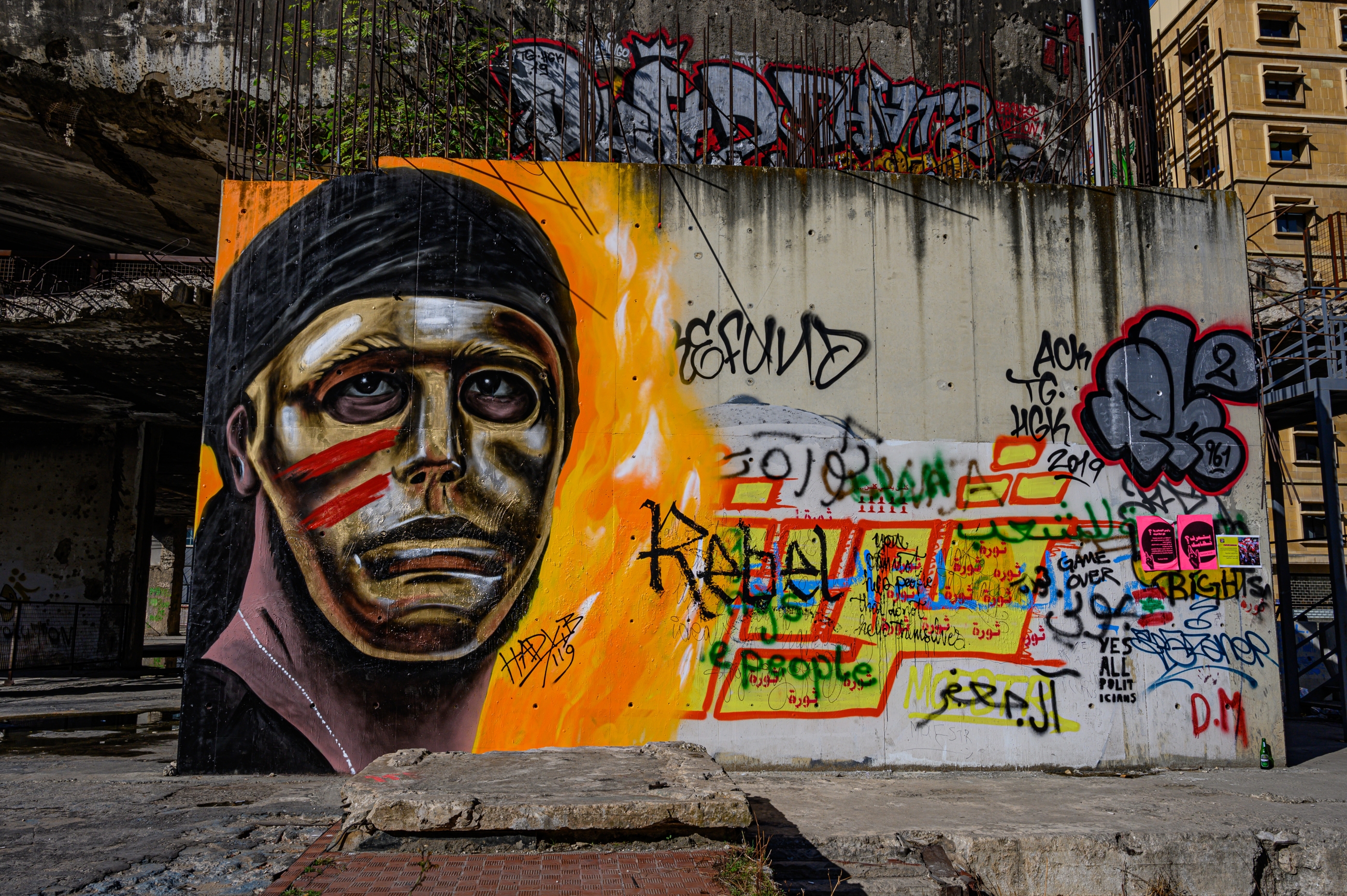
A mural outside the “Egg” (a ruined modernist cinema) features a masked protestor against a backdrop of flames. Some of the largest fires during the first two days of protests were lit directly in front of the striking central building (MEE/Finbar Anderson)
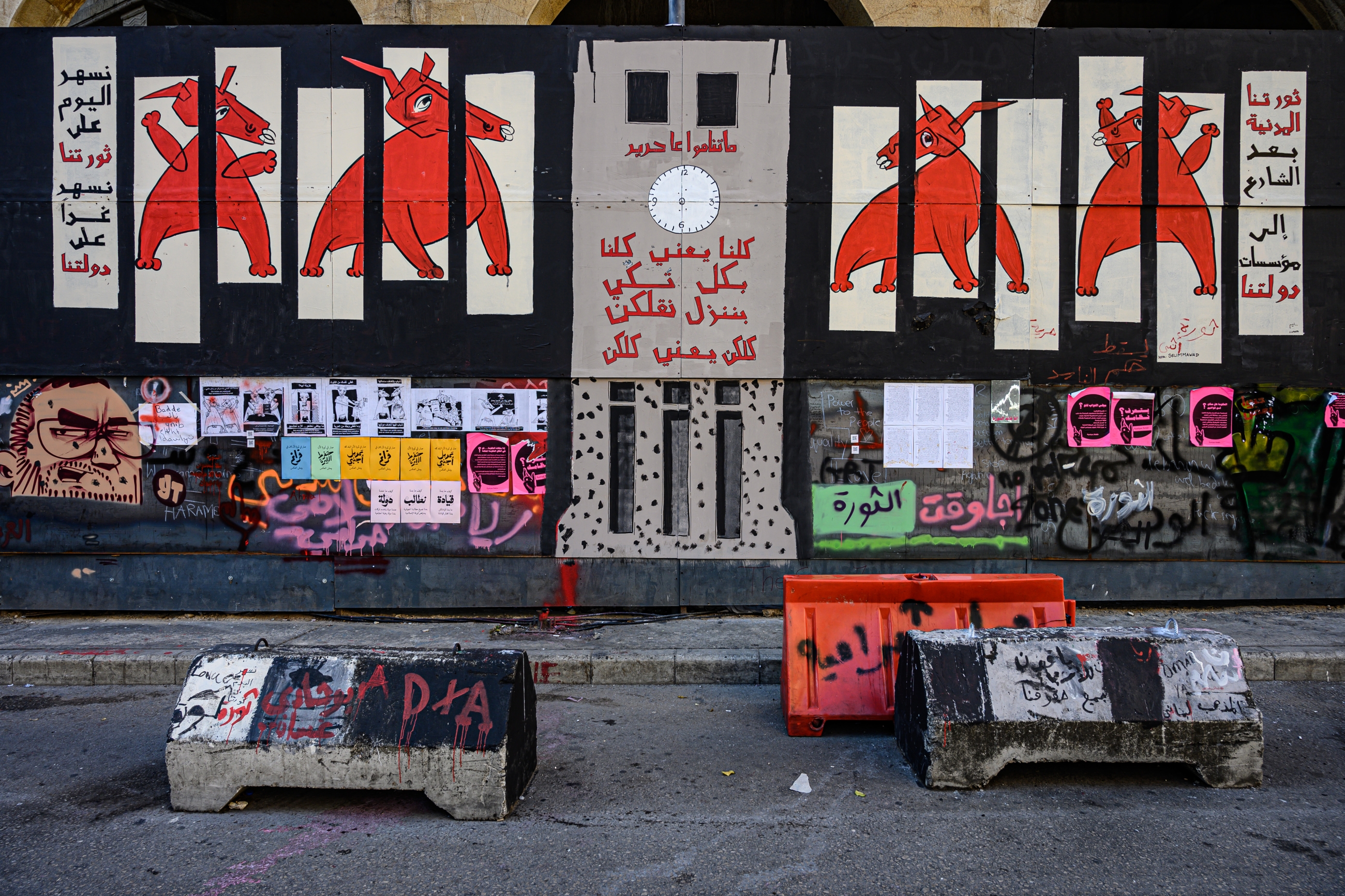
The clock tower in Beirut’s Nejmeh Square is depicted in a painting by the artist Selim Mawad. The artist’s captions call for the Lebanese to take to the streets in order to create a new, civil state. (MEE/Finbar Anderson)

Street artist Selim Mawad takes a cigarette break before continuing work. The artist, who previously worked in the human rights and peace-building fields, described the recent protests as a “collective therapy session” for Lebanese citizens. (MEE/Finbar Anderson)
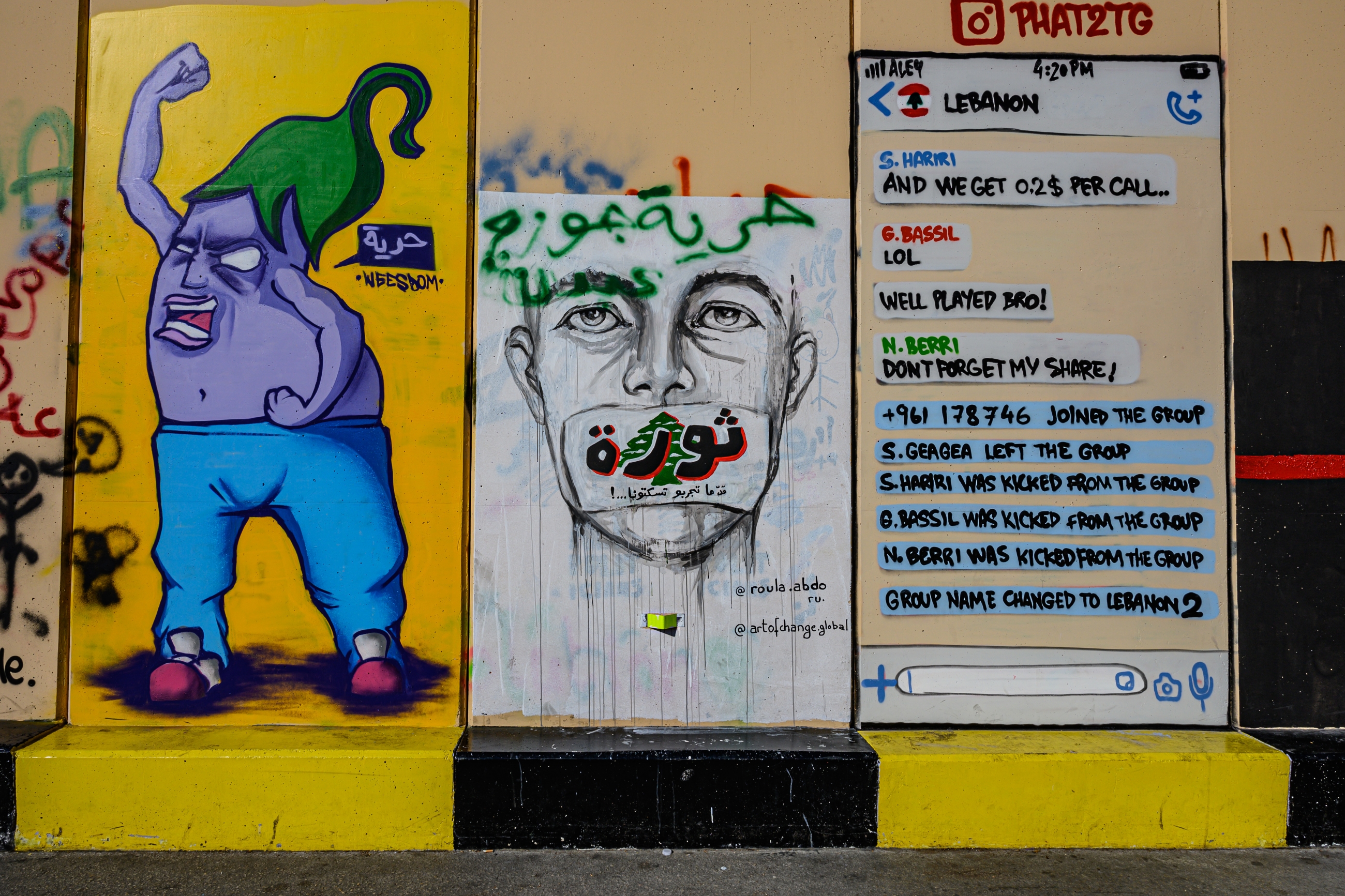
A mural next to Riad al-Solh square depicts a man with the word “thawra” (revolution) and the cedar of Lebanon on a gag. To the right, a satirical WhatsApp chat is depicted, imagining key political figures discussing the unpopular WhatsApp tax that initially helped spark the protests. (MEE/Finbar Anderson)
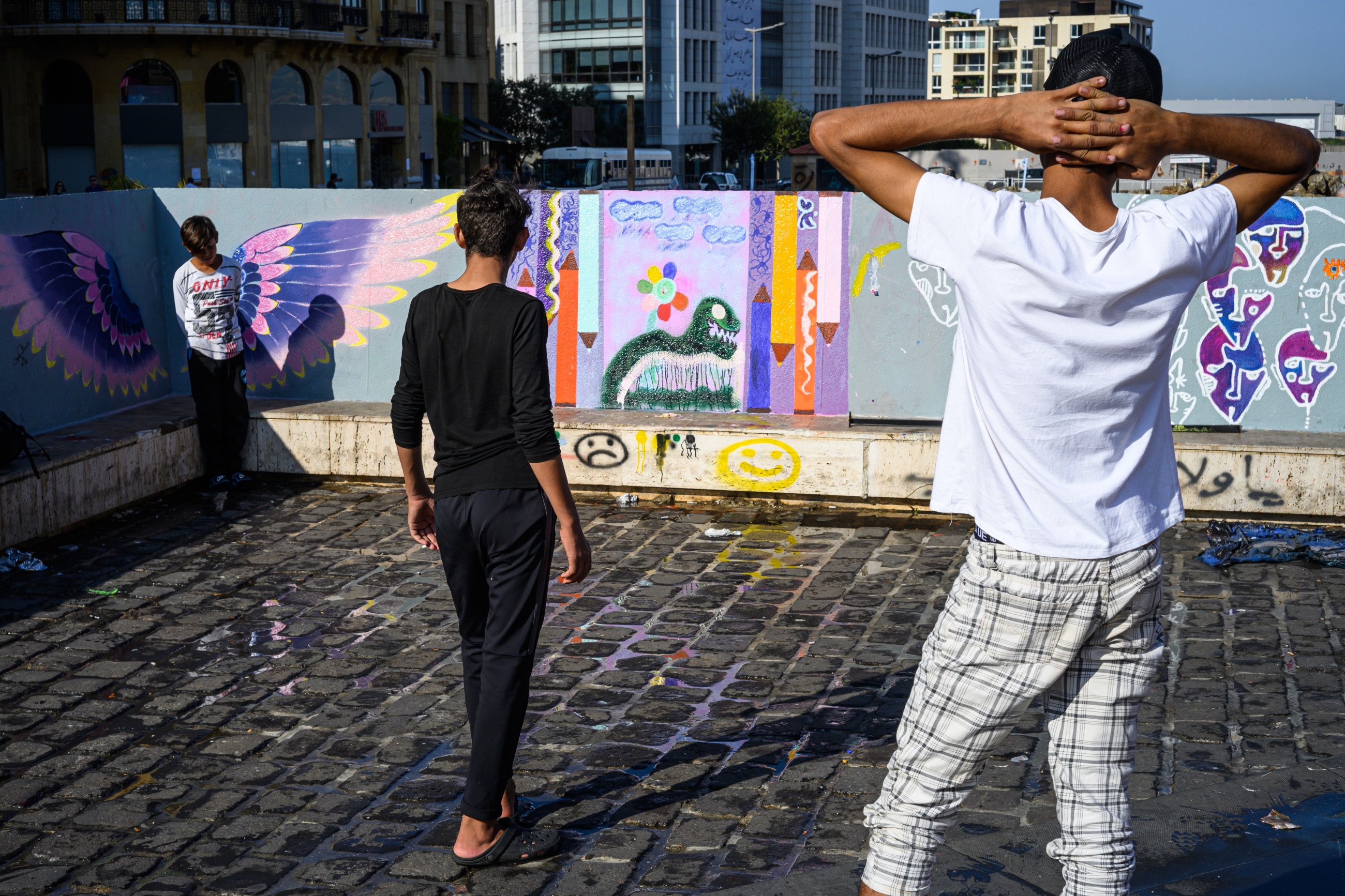
Three boys admire graffiti that has transformed the grey concrete of Martyrs’ Square. The youths have set up camp next to the square’s central statue, and told Middle East Eye it's currently their home. (MEE/Finbar Anderson)
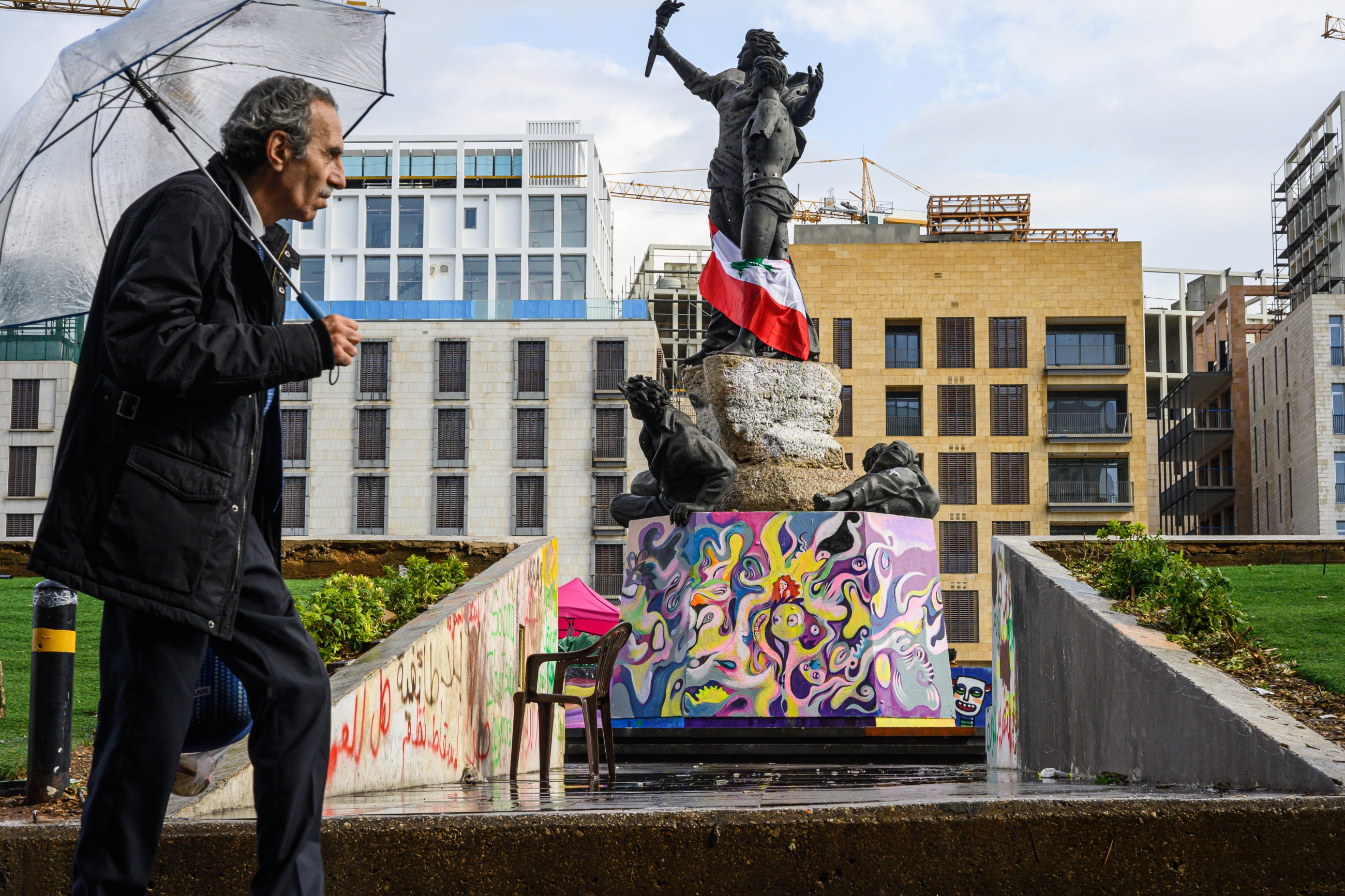
A man walks past the central statue in Beirut’s Martyrs’ Square on a rainy day in Lebanon. The square, much of which was destroyed during and after the 1975-90 Lebanese Civil War, used to be a focal point of the city, and has enjoyed a new lease of life during the protests. (Finbar Anderson/MEE)

A mural on the strategice Ring Bridge connecting Downtown with west Beirut features the word “silmiyye” (peaceful). Anti-government protestors have successfully blocked the route for days, and though there have been attempts by security forces and Hezbollah and Amal supporters to clear them, the relative lack of violence has been noteable. (MEE/Finbar Anderson)

A used painting palette lies abandoned in a puddle, which reflects the famous, bullet hole-riddled statue. (MEE/Finbar Anderson)
This article is available in French on Middle East Eye French edition.
Middle East Eye delivers independent and unrivalled coverage and analysis of the Middle East, North Africa and beyond. To learn more about republishing this content and the associated fees, please fill out this form. More about MEE can be found here.


